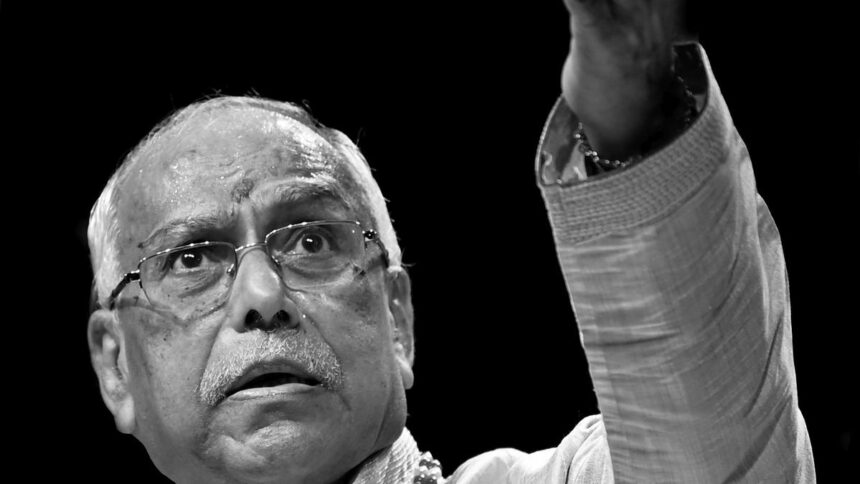The soil of Dharwad is called special because it has produced musicians such as Sawai Gandharva, Pt. Bhimsen Joshi, Vidushi Gangubai Hungal, Pt. Mallikarjun Mansoor, Pt. Kumar Gandarva, Pt. Vasavraj Rajguru. Pt. Vinayak Torvi also hails from the same place. Born in the family of Harikatha Vidwan Keertan Kesari Malhar Rao Torvi on the auspicious day of Ganesh Chaturthi, September 4, 1948, he belongs to the musical lineage of Dharwad. As for Pt. Vinayak Torvi’s steadfast rendering of the absurd leaves music lovers in awe, the lighthearted delivery of music draws attention for its artistic insight and neatly spoken lyrical content.
Trained in the strict Gurukula system, Vinayak Torvi received his initial training from Gururao Deshpande and then from Pt. Bhimsen Joshi. He obtained his Masters in Music from Karnataka University, Dharwad, where he trained under Pt. Mallikarjun Mansur, Pt. Vasavraj Rajguru and Gangubai Hangal. He also holds an Honorary Doctorate from the University of Dr. Ganggubai Hangal Music and Performing arts, Mysuru. Pt. Vinayak Torvi also has several prestigious awards to his credit – Sangeet Natak Akademi Award, Arya Bhatta International Award and Kirana Gharana Award. After learning from several musical artists, Pt. Vinayak Torvi trained many students, who have become complete performing artists.
To celebrate his 75th birthday and life filled with music, his disciples and well-wishers recently organized ‘Amrut Mahotsava’, featuring music concerts by renowned musicians such as N. Rajam, Pt. Yogesh Shamsi, Pt. Ram Deshpande, and Vidushi Ashwini Bhide.
After celebrating the event with a series of concerts in Pune, Mumbai, Dharwad, Varanasi, San Francisco (USA) and Bengaluru, the final stop will be at the India International Centre, in Delhi on September 21. It featured Pt. Nayan Ghosh and Pt. Student of Vinayak Torvi Dattatreya Velankar.
Pt. Vinayak Torvi, known for his absurd renditions, recalls his years of training under different teachers and how he incorporated different gharana styles in his singing. Excerpts from the interview.
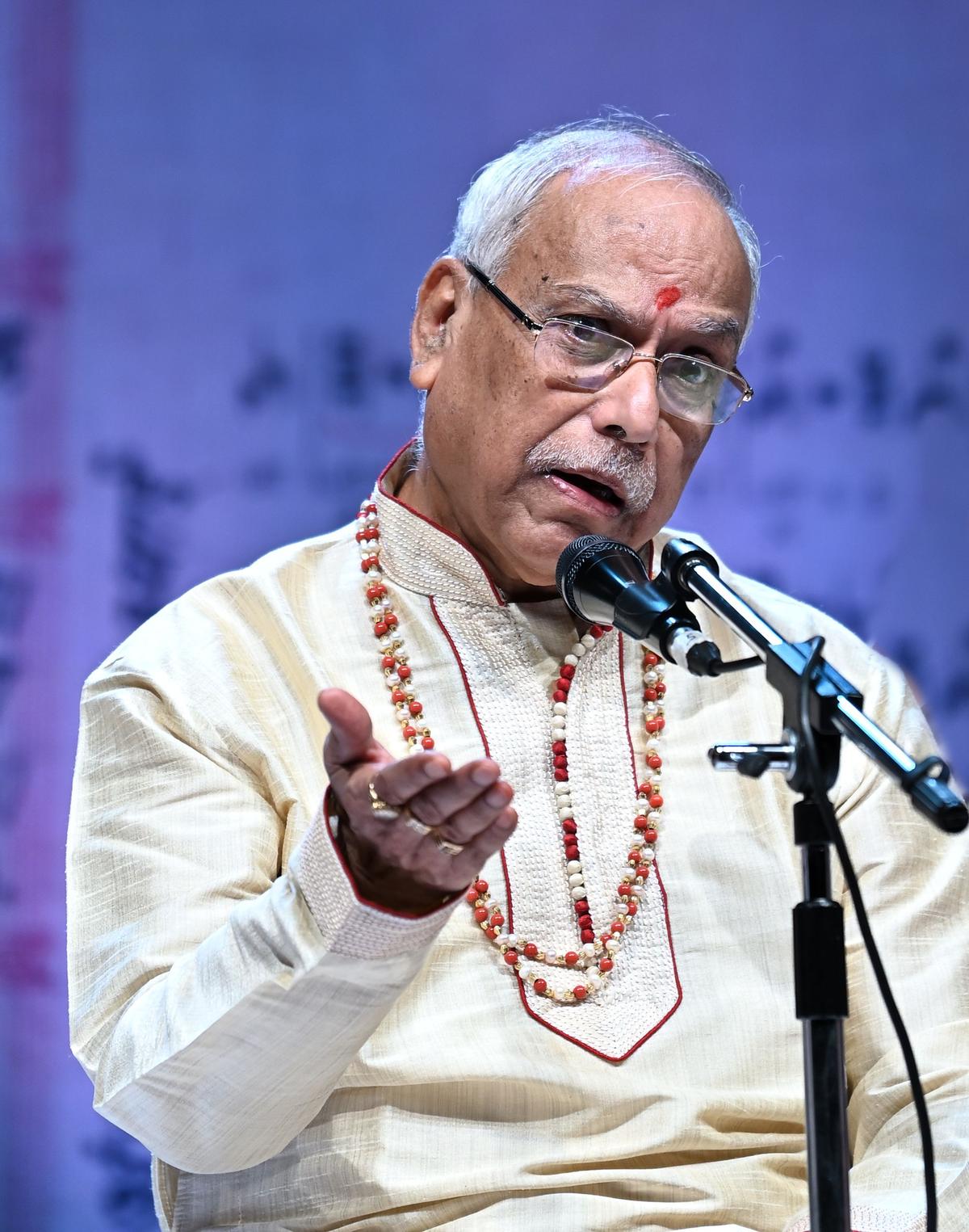
Pt. Vinayak Torvi mastered the art of blending different gharana styles | Photo Credit: Photo by: Dhananjay Hegde.
Question: Born in the family of Pt. Malhar Rao Torvi, Harikatha vidwan keertankar, what do you think is useful for you, as a classical vocalist?
Answer: This is the first and most important step in my musical journey. I was lucky not only to be born in a Keertankar family but also to have the opportunity to learn the intricacies of Keertan Rendering directly from my father. Keertan Kala (Keertan art) is a folk art, which is the basis of classical music. Many Raag-Raginis are from Keertan base. Keertan Kala encompasses all Ashta-Pilu sentiments, including singing, playing instruments, dance, drama, bhava, laya, layakari, and tarana. It is said that in Gwalior Gharana music aspirants are taught Keertan as the first step to learning music. My father had a natural talent for kala Keertan and I was lucky to have him as my first music teacher.
Q:Your guru, Gururao Deshpande, belongs to the Gwalior gharana, while Pt. Bhimsen Joshi the Kirana gharana. How did you deal with your differences when you were young?
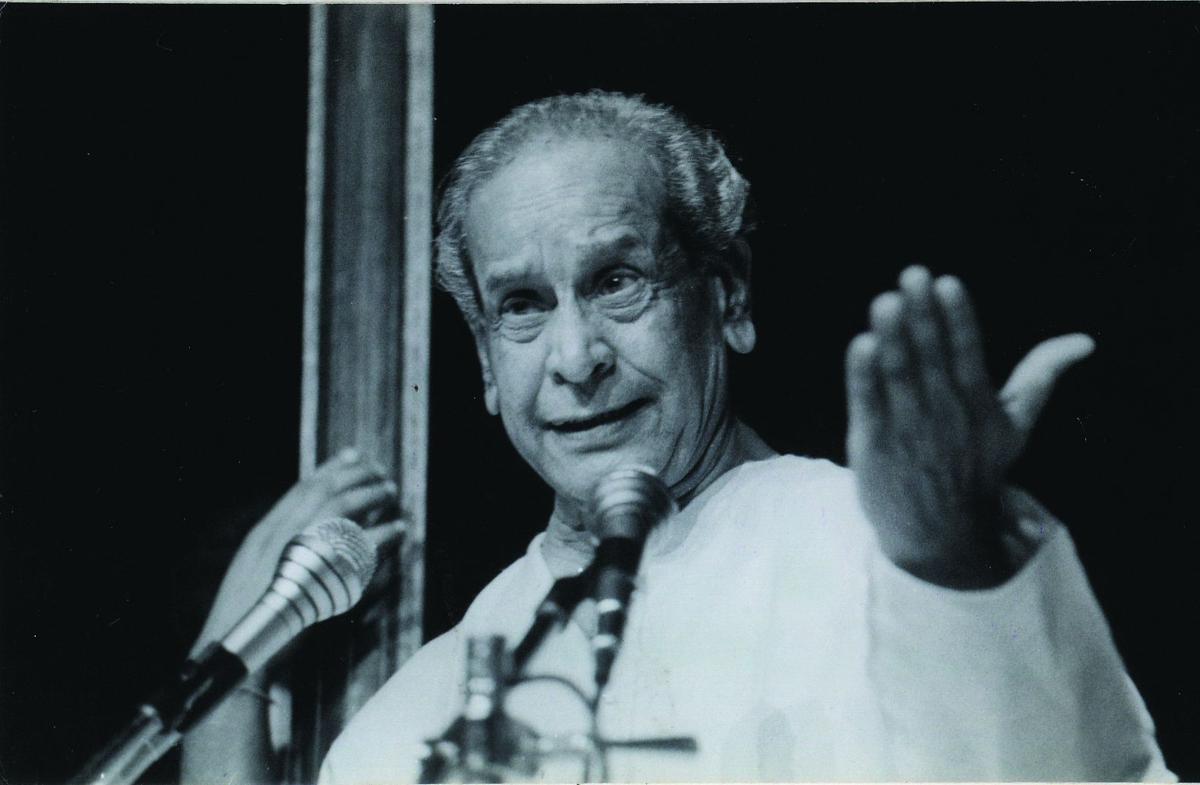
Pt. Bhimsen Joshi, under Pt. Torvi learns Kirana gharana gayaki. | Photo Credit: The Hindu Archives
A: Gwalior gharana is the source of all gharanas. It has an innate ability to absorb and combine the best qualities of other gharanas including the Kirana gharana. I was lucky to study under two teachers without much difficulty, as Pt. Bhimsen Joshi is related to Gururao Deshpande, who is also related to Ustad Abdul Karim Khan Saheb, the crown jewel of the Kirana gharana. He used to lend vocal support to Khan Saheb during concerts. That’s how Kirana gharana gayaki has influenced Gururao’s gayaki (singing style). And this consultant is instrumental in feeling equally at ease with both Gwalior and Kirana.
Q:Apart from Gwalior and Kirana, your singing style also carries the nuances of Jaipur and Agra gharanas. How do you mix this style?
A: My teacher Gururao Deshpande was a great fan of Ustad Faiyaz Khan Saheb of the Agra Gharana, and also a close friend of Kesarbai Kerkar, the doyenne of the Jaipur gharana. Thus, he combines the best aspects of both gharas into his singing style, creating unique renditions. Therefore, I got a readymade combination of all styles of gayaki from Gururao Ji himself.
Q:While pursuing your master’s degree at Karnataka University, you studied under Pt. Mallikarjun Mansoor, Pt. Basavraj Rajguru and Vidushi Ganggubai Hangal. What helps you create your own style or confuses you?
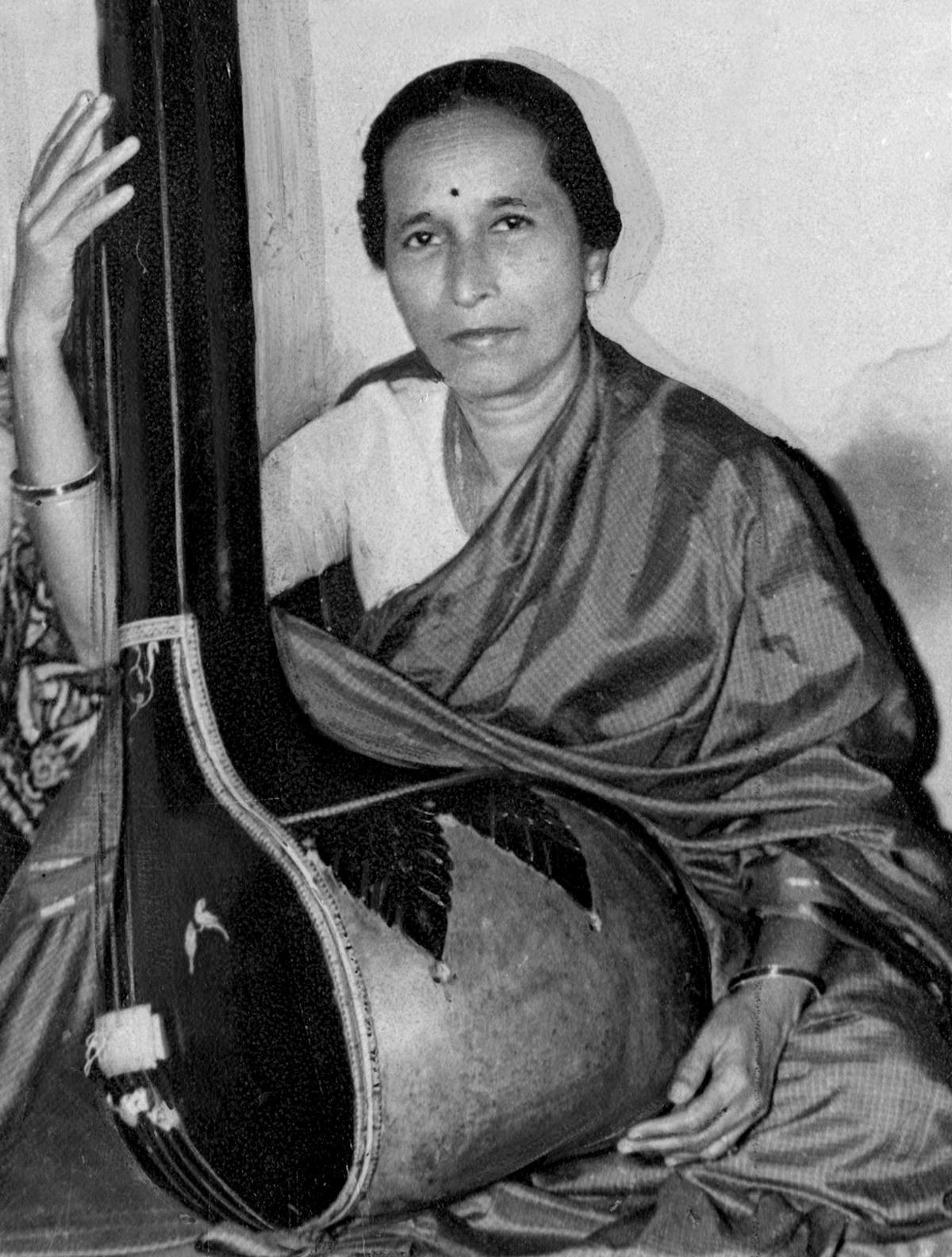
Gangubai Hangal is known as an exponent of khayal rendition, a genre of Hindustani classical music from Karnataka. | Photo Credit: THE HINDU ARCHIVES
A: It was a rare and golden opportunity for me to be trained in different gharana under one roof. I learned from these stalwarts raags which were part of the syllabus, but not taught to me by Gururao Deshpande Ji. There was no question of confusion as a student, because I was familiar with both gharanas under the tutelage of Gururao Deshpande. My exposure to him at Karnataka University helped me perfect my music.
Q:Tell us about including vachanas, Devarnamas, bhajans and Marathi Abhangs in your music repertoire. And where did you source it from?
A: I received classical music training under Gururao Ji, but I was inspired by Pt. Bhimsen Joshi’s singing style is abhang, bhajans and Devaranamas. I learned to sing Vachan from Mansur Ji and Vasavras Rajguru Ji when I was training in Karnataka University.
Q:How do you define your style?
A: I consider aalap to be the soul of my concerts; laya and layakari are the brain, and sound is the link. I can change my voice to suit different gharana styles, so different rasikas can please my music.
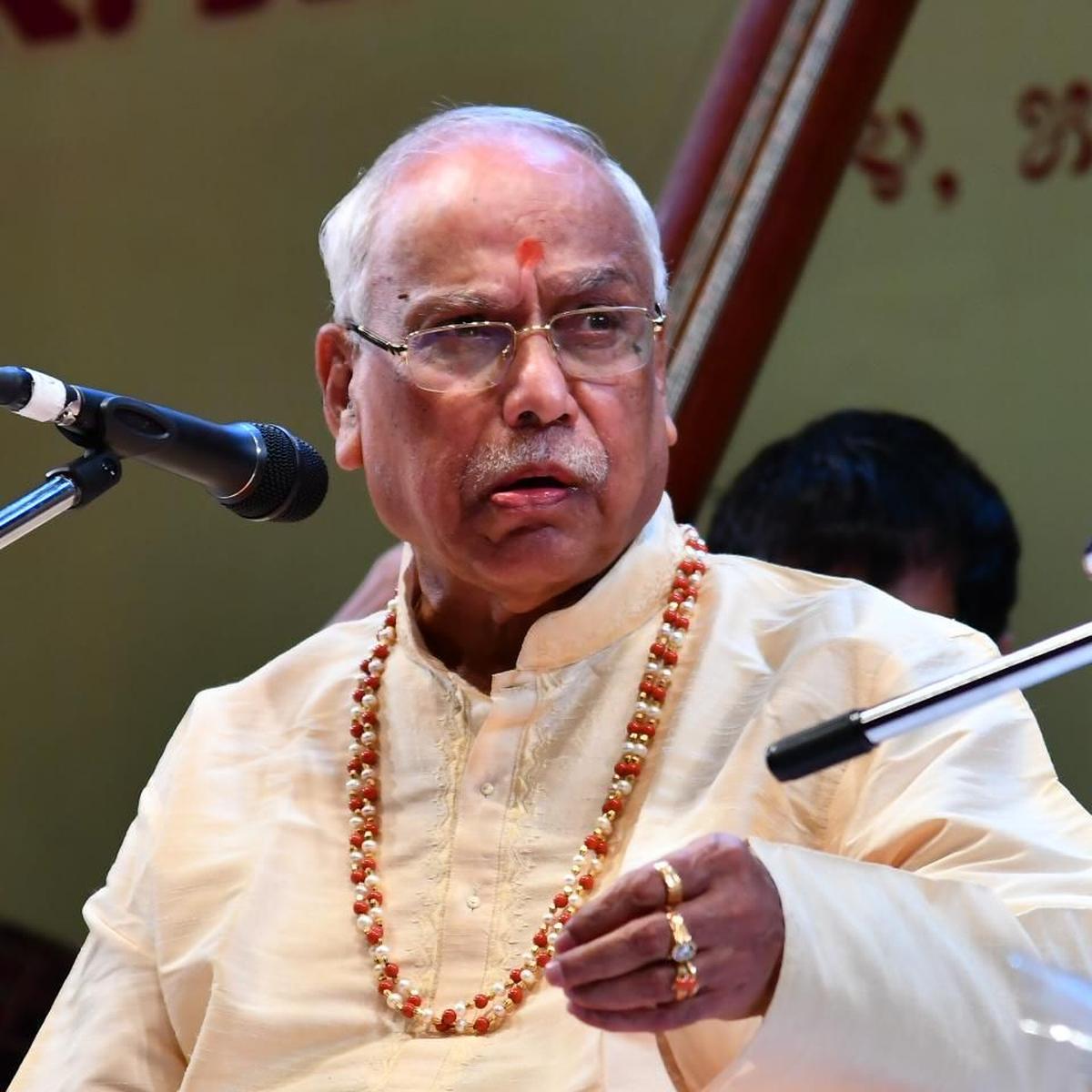
Pt. Vinayak Torvi in concert. | Photo Credit: Photo by: Dhananjay Hegde.
The skill of the artist lies in choosing the appropriate raags. Apart from the training in the teacher can, precisely riyaz and hard work, artists must have the skills to organize a concert that suits the occasion. My philosophy is to sing as much as possible in the allotted time, regardless of the size of the audience. Also, being a teacher has been beneficial in my musical journey because I learn so many new things while teaching!
Published – 20 September 2024 11:52 IST
(tagKangoTranslate) Pt. Bhimsen Joshi Kesarbai Kerkar Pt. Vinayak Torvi Sawai Gandharva Gangubai Hangal Pt. Mallikarjun Mansoor Pt. Kumar Gandarva Pt. Vasavraj Rajguru

